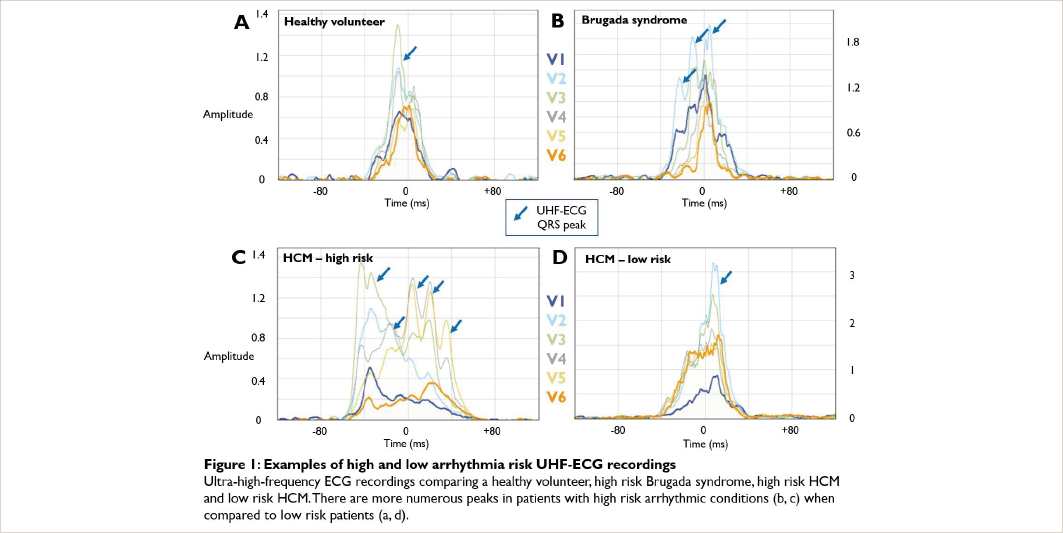Introduction: Fragmentation of the QRS complex is a feature of arrhythmogenic conditions including primary arrhythmia syndromes, ischaemic and non-ischaemic cardiomyopathy and in the presence of myocardial scar. While gross fragmentation can be observed on 12-lead ECG, more subtle abnormalities may be missed. Ultra-high-frequency ECG (UHF-ECG) is an ECG-based technique that measures electrical activation signals in high-frequency bands that are filtered out by conventional ECG measurements. We hypothesised that UHF-ECG can unmask these subtle electrical disturbances and, by extension, could provide a mechanism to characterise arrhythmic risk.
Methods: We prospectively recruited 60 participants to undergo UHF-ECG recordings. This consisted of 23 healthy volunteers and 37 patients with hereditary arrhythmic conditions: 25 hypertrophic cardiomyopathy (HCM), 5 Brugada syndrome, 4 arrhythmogenic cardiomyopathy, 3 idiopathic ventricular fibrillation, 2 long QT syndrome and 1 non-ischaemic dilated cardiomyopathy. Each patient with a hereditary arrhythmic condition was evaluated by two independent researchers to determine their arrhythmic risk based on the following criteria: history of cardiac arrest, sustained ventricular arrhythmia, appropriate therapy, syncope and programmed ventricular stimulation result. Healthy volunteers were assumed to have a low arrhythmic risk. Two further researchers reviewed the UHF-ECG recordings to quantify the degree of QRS fractionation (i.e. number of discrete activation peaks) exhibited using visual assessment. UHF-QRS peaks were recorded where a discrete deflection was visualised simultaneously in two or more ECG leads. A third researcher adjudicated in instances of disagreement regarding arrhythmic risk status or fractionation peak interpretation.
Results: Our cohort comprised 20 patients with a high arrhythmic risk and 40 patients with a low arrhythmic risk. High arrhythmic risk subjects exhibited greater fractionation severity, as represented by more numerous UHF-ECG QRS peaks, when compared with low-risk subjects (χ2=8.95, p=0.03). When comparing high-risk and low-risk subjects within the hereditary arrhythmic condition patient group, there was more fractionation in the high-risk group. Example UHF-ECGs are shown in Figure 1. UHF-ECG fragmentation could be observed even when conventionally filtered 12-lead ECG QRS fragmentation could not be observed. Among patients with inherited cardiac conditions, hypertrophic cardiomyopathy patients had closest association between fractionation and risk status. Measurements of UHF-QRS peaks were highly reproducible between the independent assessors.
Conclusion: QRS fractionation, unmasked by UHF-ECG, may be useful for sudden cardiac death risk stratification in patients with hereditary arrhythmic conditions. ❑








